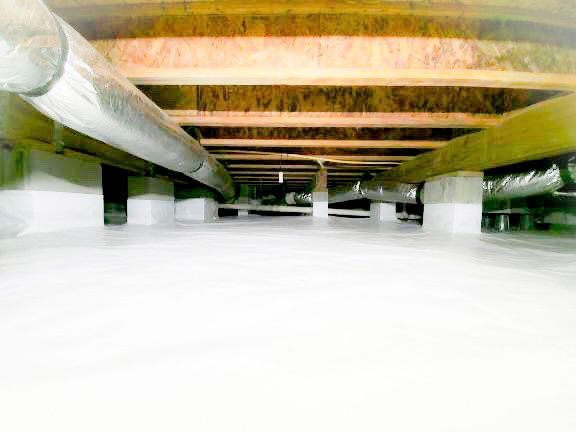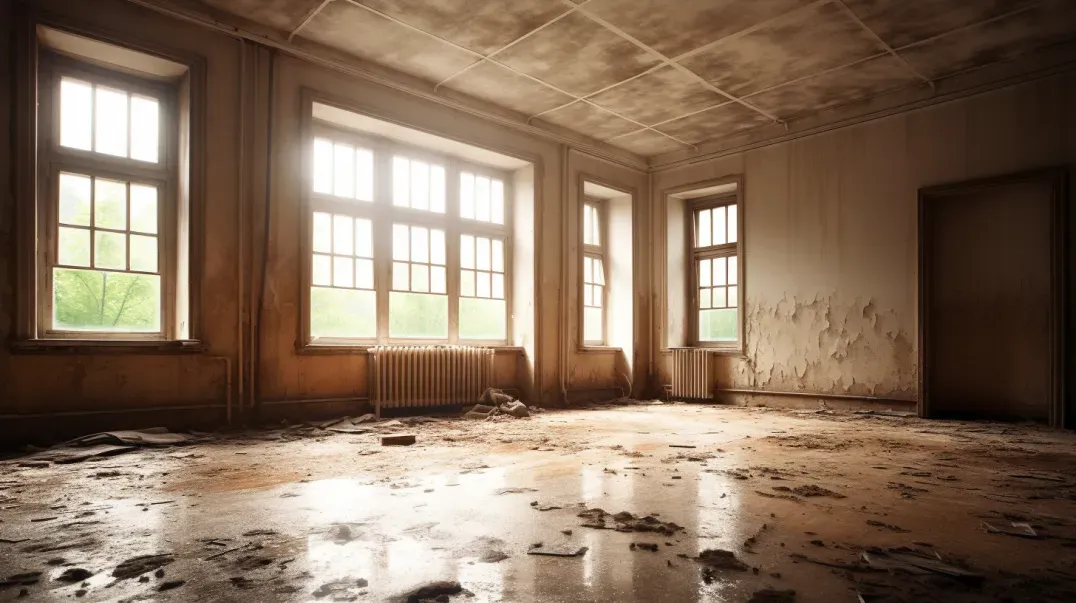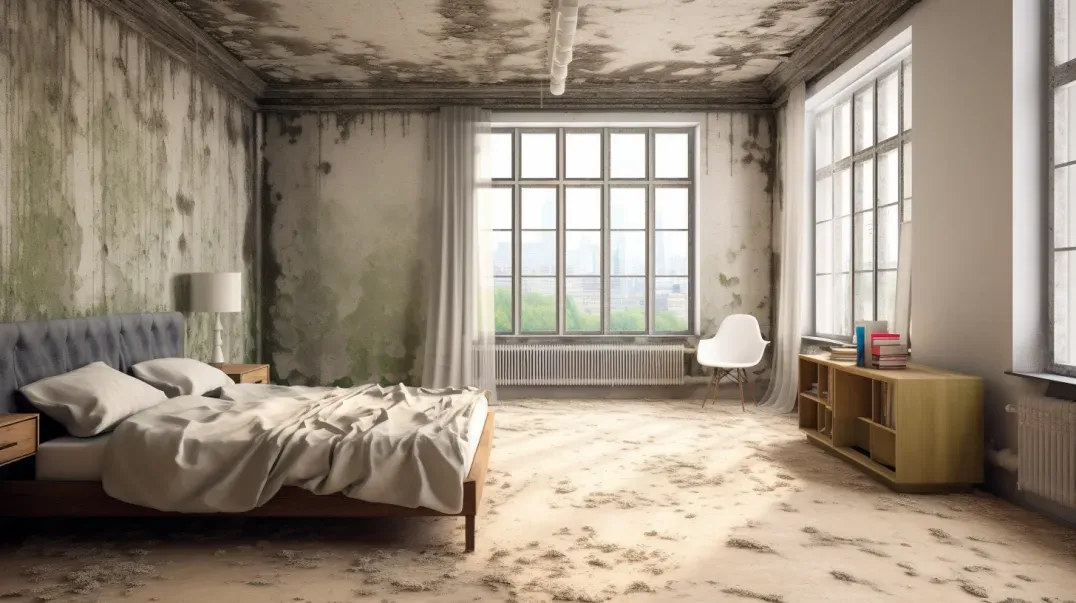Legal Aspects of Crawl Space Mold
Welcome to our insightful exploration of why mold in crawl spaces isn't just a health or property concern, but also a significant legal matter. Mold, particularly in hidden areas like crawl spaces, can often be overlooked until it becomes a serious issue. However, its presence in these areas can have far-reaching legal implications for homeowners, landlords, and tenants.
Understanding the Legal Implications
Mold in crawl spaces can lead to disputes and legal challenges, making it crucial for property owners and residents to understand their legal responsibilities and rights. This blog aims to shed light on the legal dimensions of crawl space mold, an often-misunderstood aspect of property management.
Why It's a Legal Concern:
Health Risks: Mold can pose serious health risks, especially to those with respiratory issues. Its presence in crawl spaces, a common part of many buildings, can lead to legal issues if it affects the health of the occupants.
Property Damage: Beyond health, mold can cause significant damage to the structure of a property. Failure to address mold issues can lead to legal claims for property damage.
Landlord-Tenant Laws: There are specific laws and regulations that require landlords to provide safe and habitable living conditions, which include addressing mold problems.
Your Rights and Responsibilities
Whether you're a homeowner, landlord, or tenant, understanding your legal rights and responsibilities is crucial in dealing with crawl space mold. This blog will guide you through:
Homeowners' Duties: Responsibilities of homeowners in preventing and addressing mold in crawl spaces.
Landlords' Obligations: Legal obligations of landlords to ensure mold-free living environments for their tenants.
Tenants' Rights: Rights of tenants when dealing with mold issues and the steps they can take if their living conditions are compromised.
Join us as we delve into the legalities surrounding mold in crawl spaces, equipping you with the knowledge to navigate this complex issue with confidence and understanding.
Understanding Mold in Crawl Spaces
Mold growth in crawl spaces is a common yet often overlooked problem in many homes. Understanding its nature, growth conditions, and the risks it poses is crucial for maintaining a healthy and safe living environment.
What is Crawl Space Mold?
Crawl space mold refers to mold growth occurring in the crawl spaces of buildings – the narrow, unfinished areas typically used to house the building's plumbing and electrical wiring. These spaces, due to their limited ventilation and often damp conditions, provide an ideal environment for mold growth.
Characteristics of Crawl Space Mold:
- Growth Conditions: Mold in crawl spaces thrives in moist, humid conditions, often exacerbated by poor ventilation, leaks, or flooding.
- Types of Mold: Common molds found in crawl spaces include Cladosporium, Penicillium, Aspergillus, and Stachybotrys (black mold).
- Detection: Mold in crawl spaces can often go unnoticed due to the area's inaccessibility. It's typically detected by a musty odor or visible signs during inspections.
Potential Impacts:
- Mold in crawl spaces can affect the air quality of the entire building, as air from the crawl space circulates up into the living areas.
- If left unchecked, it can spread to other parts of the building, leading to more extensive infestations.
Health and Structural Risks Associated with Crawl Space Mold
The presence of mold in crawl spaces poses significant health and structural risks that should not be underestimated.
Health Hazards:
- Respiratory Issues: Exposure to mold spores can lead to respiratory problems, allergic reactions, asthma attacks, and in severe cases, more serious health conditions.
- Vulnerable Individuals: People with existing respiratory conditions, allergies, or weakened immune systems are particularly susceptible to health issues caused by mold.
Structural Damage:
- Wood Rot: Mold can lead to wood decay, compromising the structural integrity of the building.
- Material Damage: Continuous mold growth can damage other building materials and contents, leading to costly repairs and replacements.
Understanding the nature of crawl space mold and the risks it poses is the first step in effectively managing and mitigating its impact on both health and property.
Legal Responsibilities of Property Owners
Property owners have a legal obligation to maintain safe and healthy living conditions, which includes managing and preventing mold issues. Understanding these responsibilities is crucial to avoid legal repercussions and ensure the well-being of occupants.
Duty to Maintain a Mold-Free Environment
The responsibility of property owners to prevent and address mold issues is not just a matter of property maintenance but a legal obligation.
Preventive Measures:
- Regular Inspections: Conducting routine inspections of the property, especially in areas prone to moisture, can help in early detection of mold.
- Addressing Moisture Problems: Fixing leaks, ensuring proper ventilation, and controlling humidity levels are essential steps in preventing mold growth.
- Educating Tenants: Informing tenants about ways to prevent mold, such as proper ventilation and moisture control, can be an effective preventive strategy.
Responsiveness to Mold Issues:
- Property owners are legally required to respond promptly to any reported mold problems.
- Failure to address mold issues can lead to a deterioration of living conditions, making the property uninhabitable.
Consequences of Negligence
Ignoring mold problems or failing to address them adequately can lead to significant legal consequences for property owners.
Health-Related Lawsuits:
- Tenants or occupants suffering health issues due to mold exposure may file lawsuits for personal injury.
- Property owners could be held liable for medical expenses, pain and suffering, and other damages.
Property Damage Claims:
- Mold can cause significant damage to the property, leading to expensive repairs.
- Insurance claims may be denied if it is found that the mold issue was due to negligence.
Regulatory Penalties:
- Local health departments can impose fines and penalties if properties are not maintained according to health and safety standards.
- Severe cases of negligence may lead to criminal charges, especially if the occupants' health is severely affected.
Understanding and fulfilling these legal responsibilities is essential for property owners to ensure the safety and well-being of their tenants and to protect themselves from potential legal actions.
Tenant Rights and Crawl Space Mold
Tenants have specific rights when it comes to dealing with mold in rental properties, especially in areas like crawl spaces that are prone to mold growth. Understanding these rights is crucial for tenants to ensure their living environment is safe and healthy.
Tenant Rights Regarding Mold
Tenants have the right to a habitable living environment, which includes being free from harmful mold infestations.
Right to Habitable Premises:
- Landlords are legally required to provide rental properties that meet basic health and safety standards, which includes addressing mold issues.
- Tenants have the right to request mold remediation if they discover mold in their rental space, especially in areas like crawl spaces.
Disclosure Requirements:
- In some jurisdictions, landlords must disclose past or present mold issues to potential tenants before they move in.
- Tenants should be informed about the risks of mold and the measures taken to address any previous mold problems.
Steps Tenants Can Take
If tenants encounter mold issues in their rental space, there are several steps they can take to address the problem.
Document the Issue:
- Take photos or videos of the mold to document its presence and extent.
- Keep a record of any communication with the landlord regarding the mold issue.
Notify the Landlord:
- Inform the landlord about the mold issue in writing, requesting prompt remediation.
- Provide the landlord with the documented evidence of the mold.
Seek Remediation:
- Request professional mold remediation from the landlord.
- If the landlord fails to address the issue, tenants may have the right to withhold rent, pay for mold remediation themselves and deduct the cost from their rent, or break their lease without penalty, depending on local laws.
Legal Action:
- If the mold issue is not resolved and it affects the health or habitability of the rental space, tenants may have grounds for legal action against the landlord.
- Consulting with a lawyer or a local tenant rights organization can provide guidance on legal options.
Understanding their rights and the steps they can take empowers tenants to effectively address mold issues in their rental properties, particularly in areas like crawl spaces where mold is common.
Disclosure Requirements in Real Estate Transactions
The presence of mold in a property is a critical factor in real estate transactions, governed by specific disclosure laws. Understanding these laws and the impact of mold on property value and sales is essential for both sellers and buyers.
Mold Disclosure Laws
In many regions, laws require the disclosure of mold issues during the sale of a property. These laws are designed to protect buyers from unknowingly purchasing a home with hidden mold problems.
Legal Obligations for Sellers:
- Sellers are generally required to disclose any known mold issues to potential buyers. This includes past mold problems that have been resolved and current issues.
- Disclosure must be honest and complete. Failure to disclose known mold issues can lead to legal consequences, including the potential for lawsuits.
Variations by Region:
- The specifics of mold disclosure laws can vary by state or country. Some regions have more stringent requirements than others.
- It's important for both sellers and buyers to understand the local laws regarding mold disclosure in real estate transactions.
Impact on Property Value and Sales
The presence of known mold issues can significantly impact property values and the dynamics of real estate transactions.
Effect on Property Value:
- Known mold problems can decrease a property's value. Buyers often view mold as a risk and may demand a lower price to account for the cost of remediation.
- The extent of the mold issue (such as whether it's a surface problem or a deep infestation) can also influence how much the property value is affected.
Influence on Sales Process:
- Properties with disclosed mold issues may take longer to sell, as they might deter some buyers.
- Sellers might need to invest in mold remediation before listing the property to maintain its value and appeal to a broader range of buyers.
- Transparency about mold issues and remediation efforts can build trust with potential buyers and may positively influence the sales process.
Understanding mold disclosure laws and their impact on property value and sales is crucial for anyone involved in real estate transactions. It ensures that all parties are adequately informed and can make decisions based on a clear understanding of the property's condition.
Legal Remedies and Dispute Resolution
When it comes to mold-related disputes, whether in residential or commercial properties, there are several legal remedies and alternative dispute resolution methods available. Understanding these options can help parties effectively resolve conflicts.
Seeking Legal Remedies
In cases where mold issues lead to disputes, especially when health, safety, or financial concerns are involved, legal recourse may be necessary.
Options for Legal Recourse:
- Litigation: This involves taking legal action in court. Affected parties can file a lawsuit against landlords, sellers, or contractors who failed to disclose or address mold issues. Litigation can result in compensation for damages, including health-related costs, property damage, and emotional distress.
- Consumer Protection Claims: If mold issues arise from consumer products or services (like faulty construction or repairs), affected parties can file claims under consumer protection laws.
- Health and Safety Violations: In cases where mold leads to severe health hazards, legal action can be taken based on violations of health and safety regulations.
Considerations:
- Legal action should be considered after other resolution methods have failed.
- It's important to gather all necessary documentation, including evidence of mold presence, health reports, and communication records.
- Consulting with an attorney who specializes in mold-related cases is advisable to understand the legal standing and potential outcomes.
Mediation and Arbitration
Mediation and arbitration are alternative dispute resolution methods that can be less adversarial and more cost-effective than traditional litigation.
Mediation:
- In mediation, a neutral third party helps the disputing parties reach a mutually agreeable solution.
- This method is collaborative and allows for more flexible solutions tailored to the specific situation.
- Mediation is often quicker and less expensive than going to court and can preserve a more amicable relationship between the parties.
Arbitration:
- Arbitration involves a neutral arbitrator who listens to both sides and then makes a binding decision.
- It's more formal than mediation but generally less so than court proceedings.
- Arbitration can be faster than traditional litigation and offers a degree of confidentiality that might not be available in court.
Both mediation and arbitration require the agreement of all parties involved and can be effective ways to resolve mold-related disputes without the need for a lengthy and costly court process.
FAQs
Contact Lowcountry Crawlspaces Today!
Lowcountry Crawlspaces will do everything we can to ensure your experience with us is excellent.
Request A FREE Estimate
CHECKOUT RECENT POST



Schedule Your FREE Crawl Space Evaluation Today
There Is No Crawl Space Job We Can’t Fix!




